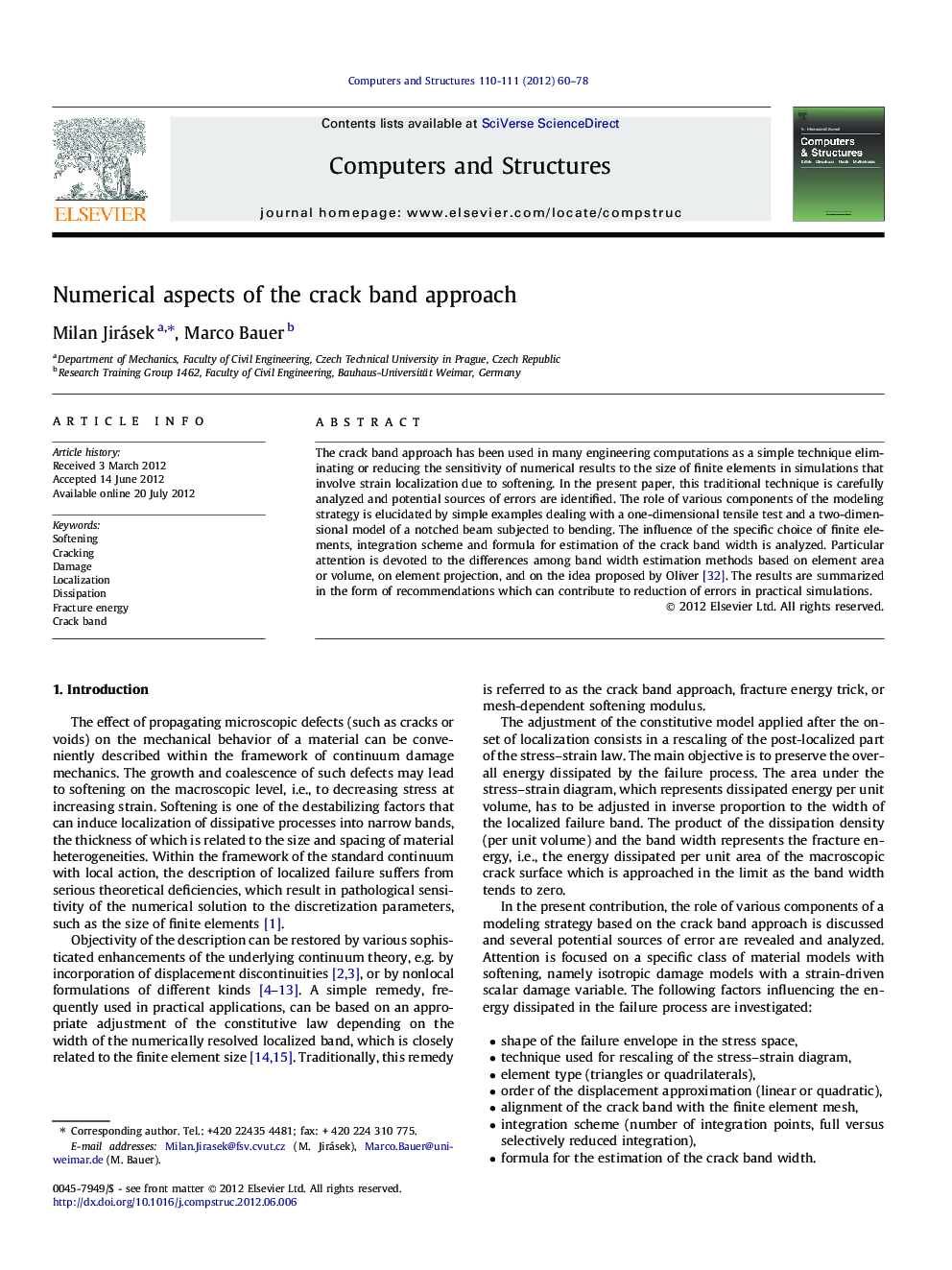| Article ID | Journal | Published Year | Pages | File Type |
|---|---|---|---|---|
| 510779 | Computers & Structures | 2012 | 19 Pages |
The crack band approach has been used in many engineering computations as a simple technique eliminating or reducing the sensitivity of numerical results to the size of finite elements in simulations that involve strain localization due to softening. In the present paper, this traditional technique is carefully analyzed and potential sources of errors are identified. The role of various components of the modeling strategy is elucidated by simple examples dealing with a one-dimensional tensile test and a two-dimensional model of a notched beam subjected to bending. The influence of the specific choice of finite elements, integration scheme and formula for estimation of the crack band width is analyzed. Particular attention is devoted to the differences among band width estimation methods based on element area or volume, on element projection, and on the idea proposed by Oliver [32]. The results are summarized in the form of recommendations which can contribute to reduction of errors in practical simulations.
► We analyze various factors affecting the performance of the crack band model. ► The influence of the mesh type and orientation is evaluated. ► The influence of the integration scheme is evaluated. ► Three approaches to the estimation of the crack band width are compared. ► Practical recommendations that can reduce errors are formulated.
